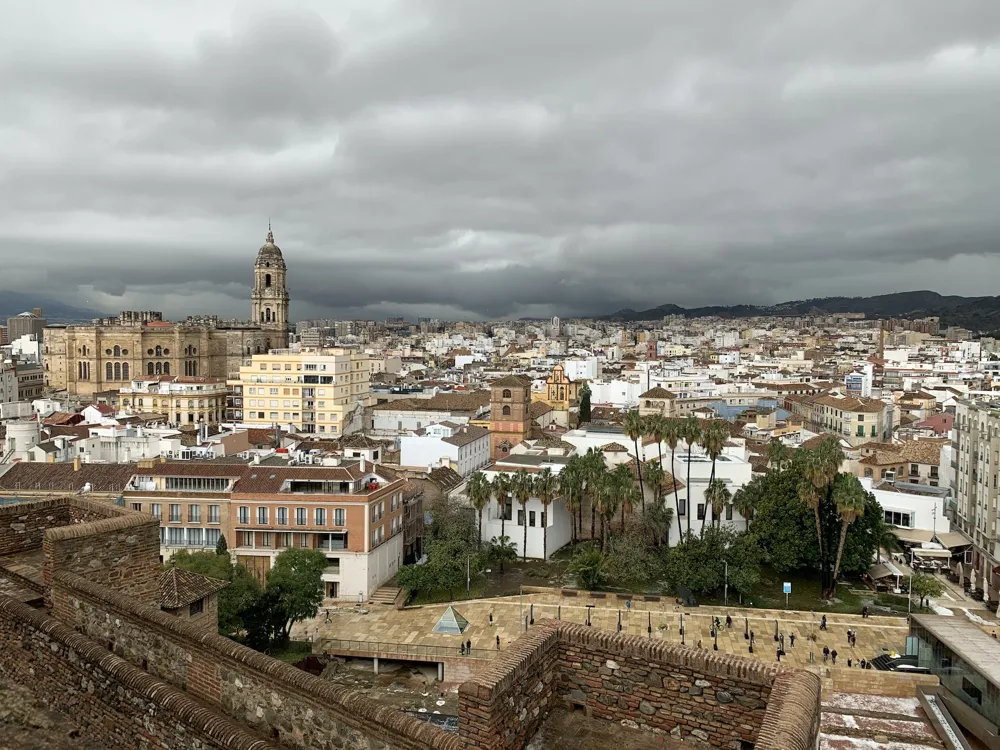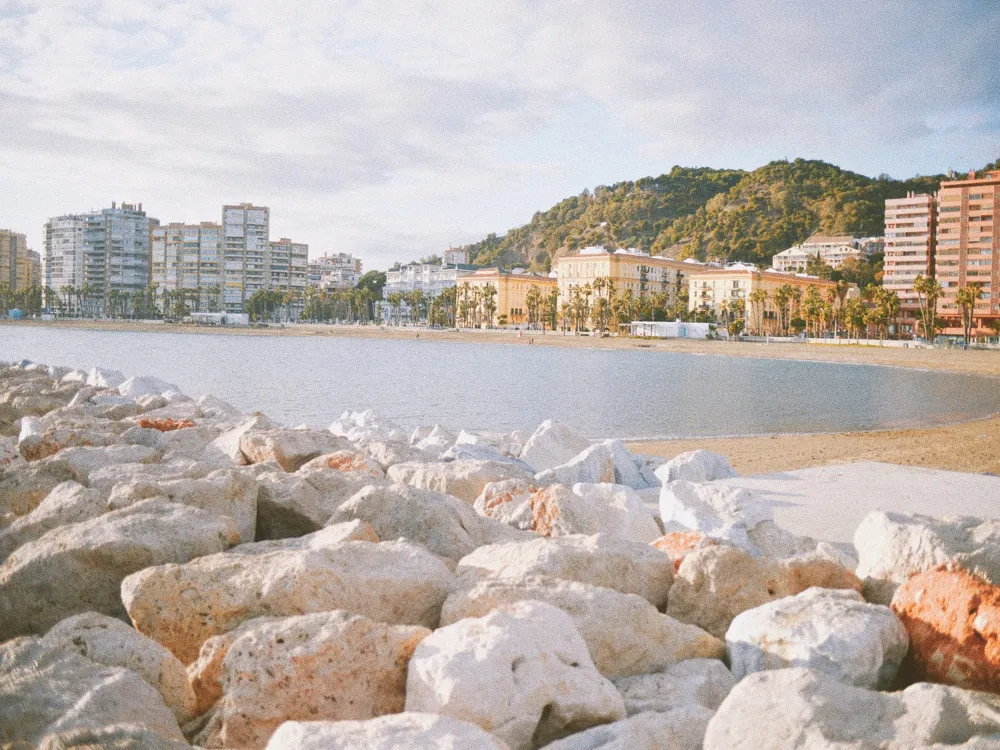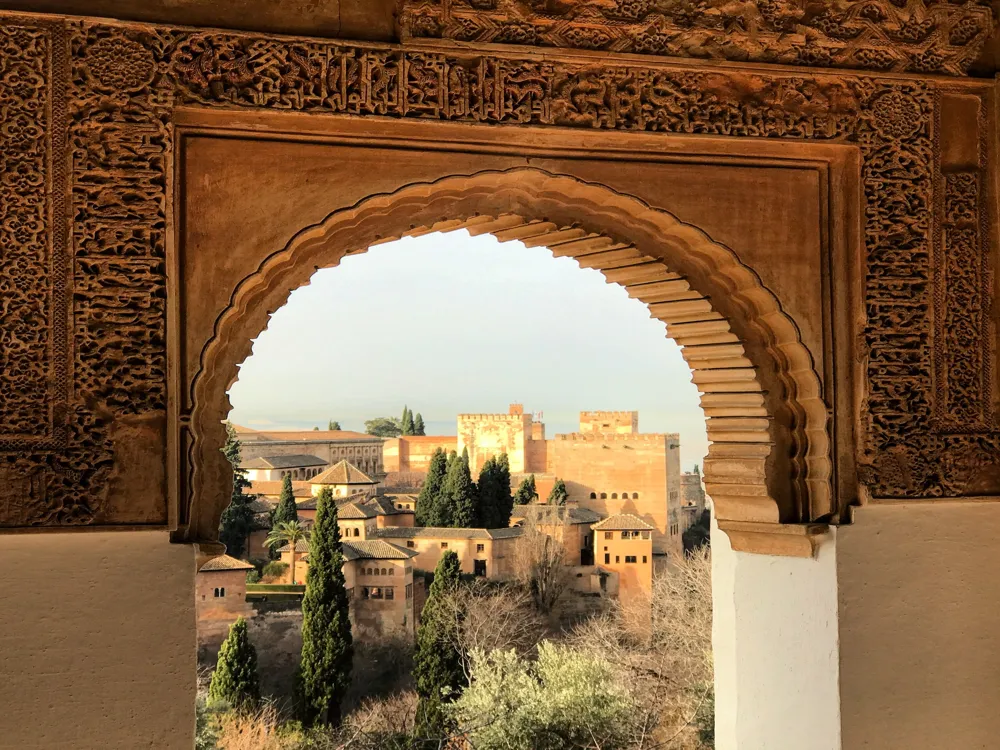The Historic Botanical Garden of The Conception in Malaga is a verdant oasis steeped in history and botanical wonder. Established in the mid-19th century, this garden is a living museum of plant species from around the world, a testament to the passion for botany and horticulture that characterized the era. Spanning over 25 hectares, the garden is not just a place for plant enthusiasts but also a sanctuary for those seeking tranquility amidst nature. Its rich history begins with the Marquis and Marchioness of Loring, who founded the garden, and it has since become a jewel in Malaga's cultural and natural heritage. The Conception has survived the test of time, enduring through historical events and evolving with the changing times, yet maintaining its original charm and purpose. The garden's layout is a blend of English landscape garden style and the traditional Mediterranean garden. This harmonious mix creates a unique environment where winding paths lead you through a diverse range of flora. From towering tropical palms to delicate orchids, the collection is both extensive and exquisite. The garden is home to over a thousand species of plants, including a significant number of tropical and subtropical species, which is quite rare for a European garden. It's not just the plants that tell a story here; the garden's architecture, sculptures, and water features all weave into the rich tapestry of its history, offering a glimpse into the past. The roots of the Historic Botanical Garden trace back to 1855 when Jorge Loring Oyarzabal and Amalia Heredia Livermore, the Marquis and Marchioness of Loring, embarked on their ambitious project. Inspired by their travels and passion for botany, they aimed to create a garden that would house a collection of exotic plants from across the globe. Over the years, the garden grew in size and diversity under their careful stewardship, becoming a center for botanical study and a social hub for Malaga's elite. The garden has witnessed significant events and transformations throughout its history. In the early 20th century, it became the property of the Echevarrieta family, who further enriched its botanical collection. During the Spanish Civil War, the garden suffered neglect but was later restored and reopened to the public. In 1943, it was declared a Historic-Artistic Garden, a recognition of its cultural and historical significance. The garden underwent a major restoration in the late 20th century, ensuring its preservation for future generations. The Conception is renowned for its diverse botanical collections. The garden's microclimate has allowed for the cultivation of an impressive range of plant species. The Palm Grove, with over a hundred different species of palms, is one of its most striking features. The garden also boasts a significant collection of bamboos, aquatic plants, and cycads. One of its most beloved sections is the Orchid House, a recent addition that houses a stunning array of orchids in a carefully controlled environment. Other notable areas include the Historical Route, where visitors can see plants that have been in the garden since its inception, and the Around the World in 80 Trees route, which takes you on a botanical journey across continents. The garden's commitment to conservation is evident in its efforts to preserve rare and endangered species, making it not just a beautiful space but also an important center for botanical research and conservation. The Conception is more than just a garden; it's a center for learning and conservation. It plays a vital role in educating the public about the importance of plant diversity and environmental conservation. The garden offers guided tours, workshops, and educational programs for all ages, fostering a deeper understanding and appreciation of the botanical world. Its conservation efforts are focused on preserving rare and endangered plant species, contributing to global efforts in biodiversity conservation. As a living museum, the garden also serves as a research center. Botanists and researchers study the garden's diverse plant collections, contributing to the scientific understanding of these species. The garden's herbarium and historical archive provide valuable resources for botanical research, making it an important center for botanical science in Spain. The architecture of the Historic Botanical Garden of The Conception in Malaga is a captivating blend of natural beauty and human artistry, embodying the garden's history and cultural significance. The garden's design reflects the 19th-century romanticism and passion for exotic landscapes, which was prevalent among the European aristocracy of the time. Its architectural elements, ranging from neoclassical to more rustic and traditional Andalusian styles, create a unique and enchanting atmosphere. At the heart of the garden's design is the concept of integrating architecture with nature. The pathways, terraces, and viewpoints are carefully designed to complement the natural landscape, offering stunning vistas and intimate spaces for contemplation. The use of local materials, such as Malaga marble and ironwork, adds to the authenticity and charm of the garden's design. The Loringiano Museum, housed in a neoclassical pavilion, is a highlight of the garden's architectural heritage. Built by the founders, it was originally intended to display their collection of archaeological artifacts. Today, it stands as a monument to their cultural and intellectual pursuits, showcasing the rich history of the garden and its founders. The museum's architecture, with its Doric columns and symmetrical design, reflects the neoclassical style popular in the 19th century. It serves as a focal point in the garden, a place where history and nature converge. The museum's interior, though modest in size, is rich in historical significance, housing artifacts and historical documents related to the garden's past. Water plays a central role in the garden's design, reflecting the traditional importance of water in Andalusian gardens. The garden features a variety of water elements, from ornamental ponds to fountains, each carefully integrated into the landscape. The sound of water adds a tranquil ambiance to the garden, creating a serene environment that enhances the natural beauty of the surroundings. One of the most notable water features is the 'La Ninfa' fountain, which is adorned with a statue of a nymph, symbolizing the garden's connection to nature and mythology. The historic aqueduct, a remnant of the garden's early irrigation system, is another significant water feature, showcasing the ingenuity and resourcefulness of its founders. The garden's various terraces and smaller gardens each have their unique character and design. The Romantic Garden, with its lush foliage and secluded paths, is a testament to the 19th-century romantic ideal of nature. The Resting Terrace, with its stunning views of the city and surrounding landscape, is a perfect spot for relaxation and contemplation. The architecture of these spaces is characterized by a blend of styles, from the rustic charm of Andalusian patios to the more formal and structured design of English gardens. The use of arches, pergolas, and gazebos throughout the garden creates intimate spaces and charming vistas, inviting visitors to explore and discover the garden's many hidden treasures. The garden's conservatory and greenhouses are essential components of its architecture, housing a variety of plant species that require specific environmental conditions. The conservatory, a modern addition to the garden, is a testament to the garden's ongoing commitment to botanical research and conservation. Its state-of-the-art design allows for precise climate control, ensuring the health and vitality of the plants it houses. The greenhouses, some of which date back to the early days of the garden, are architectural gems in their own right. Their traditional iron and glass construction is not only functional but also aesthetically pleasing, adding to the garden's historic charm. These structures play a crucial role in the garden's botanical research and education efforts, providing a controlled environment for studying and propagating rare plant species. Before visiting the Historic Botanical Garden of The Conception, it's important to plan your trip. Check the garden's website for opening hours and any special events or closures. It's recommended to allocate at least 2-3 hours for your visit to fully enjoy the garden's offerings. If you're interested in a guided tour, inquire in advance about availability and schedules. For a comfortable visit, bring along water, sunscreen, and a hat, especially during the summer months. Comfortable walking shoes are a must as the garden has many pathways and uneven surfaces. A camera is also recommended to capture the garden's beauty. For those interested in botany or gardening, a notebook or a guidebook can enhance the experience. Visitors are encouraged to respect the garden's rules and regulations. This includes not picking plants or flowers, staying on designated paths, and disposing of trash properly. Remember, the garden is not only a tourist attraction but also a center for conservation and research, so treating it with care is essential. The garden is accessible to visitors with mobility issues, but some areas may be challenging to navigate due to natural terrain. Wheelchair users may need assistance in certain sections. Check with the garden staff for the most accessible routes and facilities. Photography is allowed in the garden, making it a popular spot for both amateur and professional photographers. For those interested in sketching or painting, the garden's tranquil setting and natural beauty provide ample inspiration. Be mindful of other visitors and the garden's tranquility when setting up for photography or art. Reaching the Historic Botanical Garden of The Conception in Malaga is straightforward, with several transportation options available. The garden is located approximately 5 kilometers north of Malaga's city center. Public transport is a convenient way to reach the garden. Buses from the city center, such as Line 2, have stops near the garden. Check the local transport website for the latest schedules and routes. Taxis are also a convenient option, especially for those traveling in groups or with limited mobility. If you prefer driving, the garden is accessible by car, with parking available on-site. From the city center, follow the A-7 highway and take the exit for the Botanical Garden. Signage along the route will guide you to the garden's entrance. Remember to check for any parking fees or restrictions. For the more adventurous, biking or walking to the garden is possible. There are designated bike paths leading to the garden, offering a scenic route. Walking from the city center might be challenging due to the distance, but it's a great option for those staying nearby. For an enhanced experience, consider booking a guided tour. The garden offers guided tours that provide in-depth information about the plants, history, and architecture of the garden. Group visits can also be arranged, making it a great option for schools, clubs, or organizations interested in a unique educational experience. Read MoreOverview of the Historic Botanical Garden of The Conception of Malaga
History of the Garden
Botanical Collections
Role in Education and Conservation
Architecture of the Historic Botanical Garden of The Conception
The Loringiano Museum
The Water Features
Gardens and Terraces
Conservatory and Greenhouses
Tips When Visiting the Historic Botanical Garden of The Conception
Planning Your Visit
What to Bring
Respecting the Garden
Accessibility
Photography and Sketching
How To Reach the Historic Botanical Garden of The Conception
By Public Transport
By Car
Biking or Walking
Guided Tours and Group Visits
Malaga Tourism
Best Time to Visit Malaga
How to Reach Malaga
Things To Do Malaga
Historic Botanical Garden of The Conception
Malaga
₹ 80,000 onwards
View malaga Packages
Also Refered As:
La Concepcion Jardin Botanico
Malaga Travel Packages
View All Packages For Malaga
Top Hotel Collections for Malaga

Private Pool

Luxury Hotels

5-Star Hotels

Pet Friendly
Top Hotels Near Malaga
Other Top Ranking Places In Malaga
View All Places To Visit In malaga
View malaga Packages
Also Refered As:
La Concepcion Jardin Botanico
Malaga Travel Packages
View All Packages For Malaga
Top Hotel Collections for Malaga

Private Pool

Luxury Hotels

5-Star Hotels

Pet Friendly






















